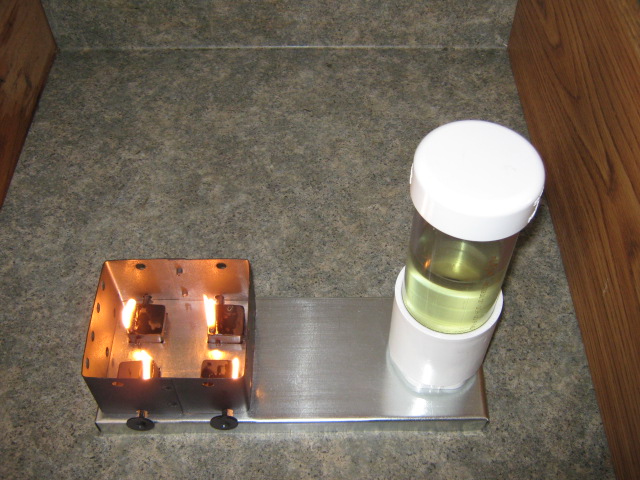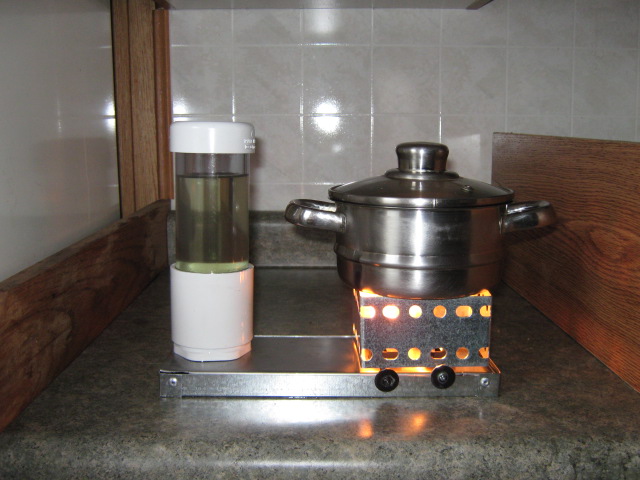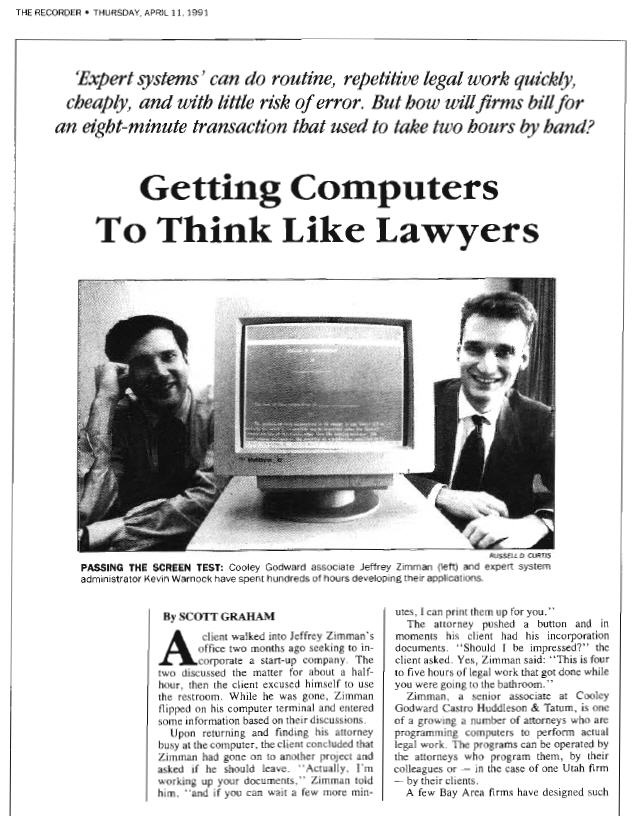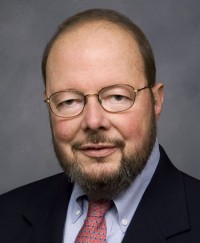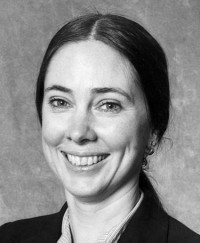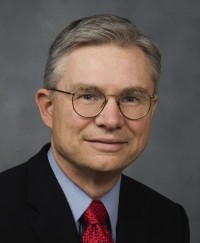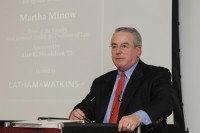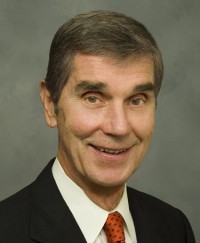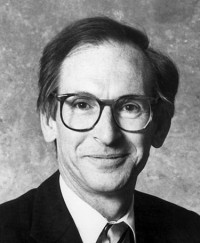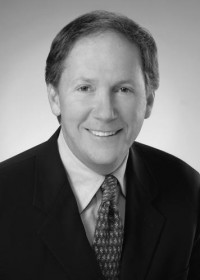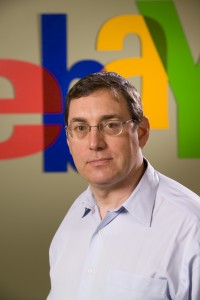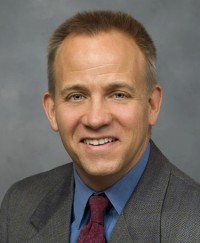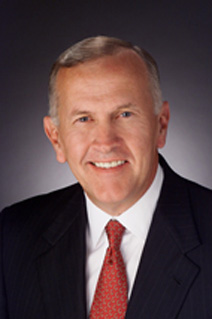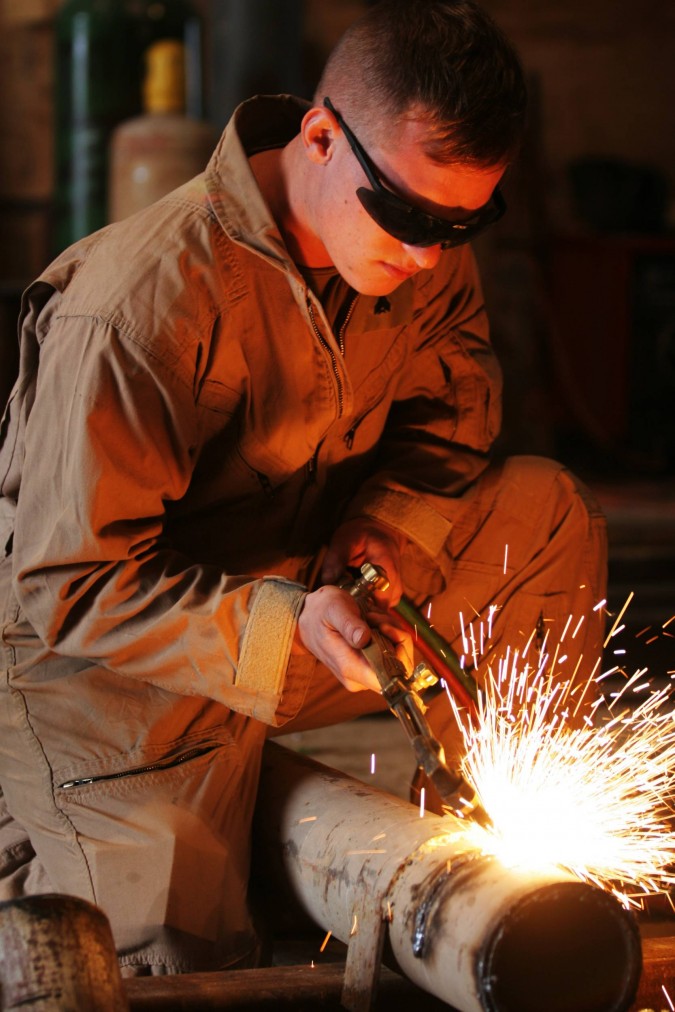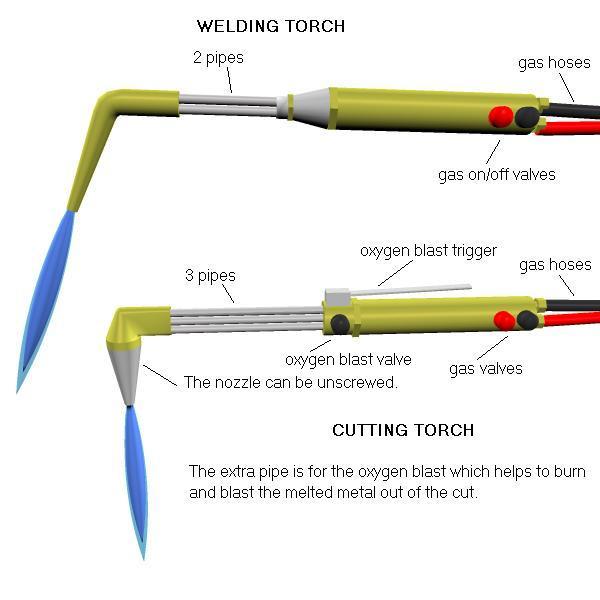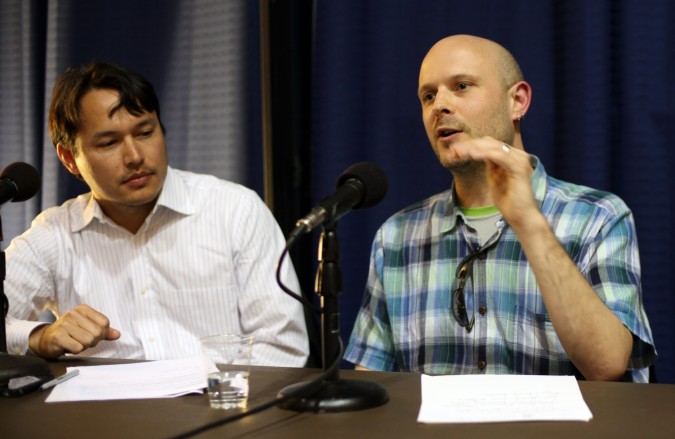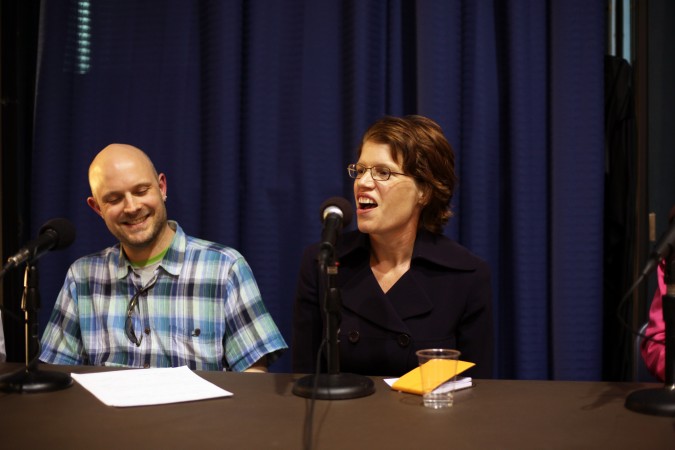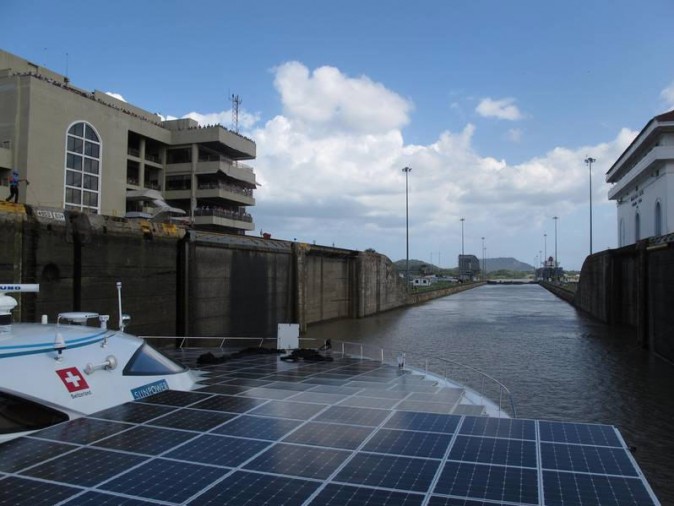Archive for 2011
Vegetable oil fueled cooking stove
I subscribe to the Tiny House Blog mailing list. This is perhaps my favorite blog email list. How the authors of this site can come up with interesting tiny houses to write about everyday I don’t know.
Sometimes Tiny House Blog writes about appliances that make sense in a tiny home, such as the Lodge-Tech vegetable oil fueled cooking stove.
Lodge-Tech vegetable oil stoves run on pure vegetable oil, not biodiesel or diesel. That means you can fuel your stove from the same bottle of oil you use to cook with. This means no stinky diesel fuel in your living space, which is more important if your cooking area is close to your sleeping area.
I am ordering one of these vegetable oil stoves for my online cooking show. I will use it to prepare rice and to keep food warm on set. I will also use it to demonstrate that alternative fuels work and have merit. I would think vegetable oil stoves would be very useful in many settings, particularly camping settings, where carrying propane, white gas or diesel fuel is undesirable.
These vegetable oil stoves are affordable at just USD $49.00 including shipping. I will conduct a thorough test and take photographs and video to post here with my written reactions to this unique stove.
It was 20 years ago today that I got my picture in The Recorder while I worked at Cooley LLP
Twenty years ago today I was working on Cooley LLP’s document assembly software development effort.
On this day April 11th in 1991, the project was featured in a lengthy article in The Recorder, a San Francisco newspaper for the legal profession. Here’s the PDF scan I made from the paper copy of the article I’ve saved for the last two decades: Getting Computers To Think Like Lawyers – The Recorder – April 11, 1991.
That was a big day for me, as non lawyers at law firms almost never receive any attention from the press. It was also a big day for my project because Kenn Guernsey, Cooley’s Managing Partner at the time, left Jeff Zimman and me a nice voicemail congratulating us for our work. Zimman was the attorney that got the project off the ground by personally programming Cooley’s first document set, and without him, I wouldn’t have likely started Hotpaper.com, Inc. or later created the first online office suite, gOffice. Hotpaper was the first online document assembly application. The application was live on the Internet in 1997, two years before I changed the name of the company from Document Automation Systems LLC to Hotpaper.com, Inc. I licensed this online document assembly software to 30 of the Fortune 500, which I was proud of given my company at the time consisted of just me.
I run into Zimman on the San Francisco MUNI every year or so. He made partner at Cooley in six years I believe, and later became an investment banker at Lazard Ltd. Now he is Chair of Posit Science, which makes computer software that helps improve mental functions. It’s really interesting to me that we both became entrepreneurs after our stints at Cooley.
I credit Cooley with teaching me to be an entrepreneur, because starting such an innovative project inside a law firm is VERY difficult. The computer department isn’t normally charged with embedding the expertise of lawyers into software, so they don’t really know the lawyers. I got to know the lawyers because I needed to get the software to mimic lawyers. I spent a lot of energy hounding the lawyers with questions that must have seemed so simple to them. Zimman was a quick learner, and didn’t need much of my help to build the document models. But Zimman had to return to his lawyer duties after creating a few sets of documents, so I had to personally recruit new lawyers to get involved. I got help from some of the top lawyers at the firm at the time, including Hank Barry, who would later testify before the United States Senate when he was the Interim CEO at Napster.com at the height of its notoriety. Alan Mendelson, Paul Renne, Tony Gilbert, Lee Benton, Dan Frank and Susan Philpot were also instrumental to getting the project as far along as we did. I couldn’t find Dan Frank on the Cooley website so I’m not sure where he works now.
Perhaps the most actively helpful contributor to answering my many legal questions was Eric Jensen. He was a young hotshot associate at the time. I think Eric started at Cooley in 1988. I started at Cooley in 1989. Jensen would return my phone calls in 30 minutes. This was astonishing, as he was working like crazy in Cooley’s Sand Hill Road office with super lawyers Mark Tanoury and Craig Dauchy. Other lawyers that answered my questions, like Michael Jacobson, would often take days or weeks to return my calls, but Jensen usually got back to me in 30 minutes. We became good friends, and I fondly recall working with him. I would even go to the Sand Hill Road office on occasion to meet in person with Jensen. Jacobson was an outstanding question answerer by the way, and he went on to strike it rich as the top lawyer at EBay. He wrote me an enthusiastic letter of recommendation when I left Cooley.
When Cooley eliminated my position of project leader for its document assembly efforts during the recession of 1994 I was devastated. The whole project quickly died and the lawyers had to stop using the time saving software, which could allow an attorney to complete 4 hours of work in 20 minutes. The reason the software couldn’t be used indefinitely is the text of the documents in law firms is constantly being improved. So to keep a document assembly system useful, someone needs to apply those language updates to the software. Once I was gone, there was nobody to implement these upgrades, so the system couldn’t be trusted to produce the firm’s latest thinking. At the time Cooley’s attorneys and staff all used a Digital Equipment Corporation VAX minicomputer cluster via dumb terminals, and the document assembly software ran under the Open VMS operating system used on the VAX. So it was not a simple matter to train someone to take over the text update maintenance of the system.
New applications were out of the question, because without an ‘intrapreneur’ to recruit and encourage attorney experts to turn over their expert knowledge, they would not do it. At the time, the computer staff were housed alone with the accounting staff in a building blocks from where the attorneys worked, so there was no opportunity for the computer staff to get to know or make friends with the lawyers.
I feel bad that my project died, but I consider it one of the luckiest breaks of my life that my position was eliminated.
Otherwise, I might never have become an entrepreneur, and my life would not have been as exciting as it’s been. It was tough on me when Cooley’s Executive Director Ken Sargent (anyone know where he is these days?) broke the bad news and helped me pack my things, but it was a highlight of my professional life. The attorneys I helped felt bad for me that I had worked so hard and then lost my job, so they helped me get started in my own business by finding me my first client and effectively vouching for me. That client, Silicon Valley Bank, paid me $30,000 and got me off to the races. My next client was Bank of America.
It’s funny to recall that one of the young associate attorneys down the hall from me advised me to sue Cooley for letting me go!
I didn’t even consider suing Cooley. Instead, I kept my head high, didn’t complain or vent to anybody beyond my closest friends, and did my best to stay on excellent terms with everyone there, non attorney staff included. Cooley paid me a nice severance package. Had I sued and somehow gotten a few extra dollars, I am 100% certain those dollars would have been ‘nothing’ compared to the value of their help in getting me established in business. In 1999 when I raised $2 million in venture capital from Blue Run Ventures, I was able to get Jensen to represent Hotpaper. His representation was key to the modest success I had with Hotpaper, and to the modest exit for $10 million 14 months later. What some readers may not know is that in 1999 is was nearly impossible to hire a good lawyer. Lawyers needed to be won over via pitching back then, and they were very selective in taking new clients. Getting a firm as impressive as Cooley was difficult, even if you did raise venture capital money. Getting a lawyer like Jensen was nearly impossible. Had I sued Cooley, I would not have gotten them to later represent me, and who knows what would have happened. I am very much against suing in general, as it doesn’t help most of the time.
My advice is to never sue your employer if they eliminate your position! I didn’t have any basis to sue anyway, as they didn’t do anything illegal. It’s illustrative to note that the attorney at Cooley who advised me to sue never made partner and is no longer there.
It’s so much better to leave nicely and stay friends.
It’s a very small world, and the people you know today you will likely still know 20 years from now. I can’t believe how fast 20 years just flew by.
I’ve stayed in touch with my attorney friends from Cooley, and Eric Jensen has been my attorney since 1999. He now leads Cooley’s business department, which accounts for a majority of the firm’s revenue, to my knowledge. Although Jensen wouldn’t say so, he’s what I consider to be one of the best attorneys in the United States. I’m grateful he continues to work with me, as my company must be one of his smallest clients. I have sent my friends to Jensen, including Priya Haji who started World of Good, Inc. which she later sold to EBay and Charity USA, and Andrew McCraith, who started and raised $15+ million in venture capital for Silicon Clocks, which was later acquired by Silicon Labs.
I have received glowing reports from everyone I’ve referred to Jensen.
On this 20th anniversary, I want to thank everyone I’ve ever known at Cooley, including Ben Studebaker who hired me in 1989 and the late Helen Gaffney who promoted me about 6 weeks after I arrived into a position that allowed me the freedom to become an intrapreneur and work on Cooley’s document assembly project. I only knew Studebaker for a matter of 6 weeks or so. I worked very hard during those first six weeks, one night staying several hours past my quitting time to finish a large project assigned to Gaffney by Susan Philpot. I got it done the day it was assigned and it was on Studebaker’s desk when he arrived in the morning. Philpot was and probably still is a feared partner at Cooley, and I’m sure Gaffney and Studebaker appreciated my quick work. I never mentioned I stayed overtime, and I never charged Cooley for the extra effort. But I think it had something to do with Studebaker offering me his job, which included supervising the spending of $500,000 per year, after about 6 weeks on the job. He had been at Cooley for a long time – at least 10 years I recall. He cashed out some of his retirement plan to attend Harvard Divinity School, where he had been accepted. He didn’t seem the type for either divinity school or Harvard. He did seem like he would make an outstanding religious leader, however, as he had an immensely likable personality and was very well thought of at Cooley. I certainly admired his conviction and risk taking. I wonder what became of him, and if he should find this post I hope that he will write to me and fill me in on how his life turned out. Thank you Ben, for you changed my life.
I want to remember my friend Sandy Price, perhaps the first attorney I met and talked with at Cooley. I had only been there a couple of days and I was there late and needed to make a photocopy. I didn’t have an access code yet, and I had to ask Price to activate the photocopy machine for me using her Equitrac accounting device code. Price worked really late almost every night… near midnight lots of nights. I’m still friends with her, and had lunch with her earlier this year. Her hard work paid off, as she’s been named a Super Lawyer every year since 2004. Price is now a partner with Sideman and Bancroft LLP, and if you need an estate planning attorney, I doubt you could find a better lawyer to help you.
I also want to remember my friend James Pirie, who reported to me for a while and who graciously agreed to handle some of my responsibilities so I could work harder on the document assembly project. He put himself at some risk by doing this. He never got in any real trouble though, to my knowledge, and Ken Sargent, the Executive Director, privately congratulated me for delegating what I could to Pirie, saying it was the only way to ‘get things done.’ I trained Pirie to do things he would have never normally learned in his job at the time, and I had complete faith in his ability to safely handle these sensitive computer tasks.
I also want to thank Bill Bradshaw, who handled purchasing of supplies for the San Francisco office. He was an extremely patient friend, and although I’ve lost touch with him, I fondly remember our friendship.
I want to acknowledge Carole Hearn, Cooley’s Director of Finance. I think she’s been there some three decades now. She spent hours educating me about office politics, trying very hard to help me navigate a path that was obscure to a bright eyed 25 year old who had never worked in a law office before. I hear from Hearn every so often, and the last time I saw her in person, about 10 years ago, she gave me a big hug.
I also want to thank Susan Newberry, then the Administrator for the San Francisco office. She’s still at Cooley, with more responsibility. Newberry and I fought, and I ultimately had to lobby to change my reporting relationship so that I reported to a special committee called the Document Automation Committee. This committee consisted of partners Zimman, Barry and Philpot. To my knowledge, the only other non attorney at Cooley that reported to a committee of partners was Sargent, the Executive Director. Even though my battles with Newberry were exasperating and stressful, it was educational and beneficial to have had to do battle with her. Her decades long tenure at Cooley is testament to her political skill and courage.
What’s interesting about these political battles is that they really helped me prepare for later battles with far bigger stakes, involving millions of dollars. Thus, Cooley really did help educate me to be a successful entrepreneur, as I don’t think high stakes office politics can be learned in school.
I credit my political skill with my being able, as the sole founder, to take my startup Hotpaper.com, Inc. from idea through to a $10,000,000+ acquisition.
In my experience, Cooley really does live by its values and vision, and I am a product of the firm’s many good deeds.
My 5 years at Cooley were instrumental to my professional growth and success.
Thank you Cooley.
Full serve Oregon fuel attendant offers to ‘top off’ my tank — why?
Oregon Gas Laws discuses the bizarre law in Oregon that makes it a crime for one to fuel their own vehicle. Apparently there is a potential USD $500 fine for pumping your own gas.
The article I link to above describes the justifications that lawmakers cited in the law. If you had asked me to guess one of the reasons for the law, I would say that it is to assure that fuel is spilled less frequently. I don’t see that reason cited in the statutes 480.330 and 480.315. Even so, I was quite surprised on April 7, 2011 when the fuel attendant at Pilot Travel Centers #233, at 800 Long John Road, in Oakland, Oregon asked me if I wanted to ’round up’ my purchase.
I asked what he meant by that phrase. He replied ‘do you want me to top off the tank?’
I would think that a fuel attendant at Pilot Travel Centers, a huge national retailer of fuel, would know better than to offer to top off, especially since topping off appears to be illegal in Oregon, as of 2009.
Here are some reasons why you should not top off your fuel tank.
Teaching cooking in school by having students prepare lunch daily for the entire student population
Around the breakfast table this morning in Tigard, Oregon, at the home of my 99 year old grandmother Elsie Battaglia, I had a good conversation with Claudia.
Claudia is a school teacher, and only recently put her profession on hold to take care of my grandmother full time.
Claudia and I had an animated conversation about teaching children to cook. I wondered aloud if perhaps the best way to teach children to cook would be to have the students cook lunch daily for the student body. Instead of employing kitchen staff, schools could employ cooking teachers that would teach and supervise students who would do the actual cooking and serving.
The teaching opportunities would be varied and numerous:
- Nutrition
- Meal planning
- Accounting
- Budgeting
- Cleaning
- Customer service
- Math
- Growing
- Purchasing
- Cooking
School kitchens already have certified cooking and food preparation appliances, and by turning the kitchen into a classroom for use throughout the school day, the classroom area of the school is automatically increased at zero or small cost.
Claudia thought my idea is worthwhile. She has dozens of ideas she wants to pursue to increase the quality of education. She hopes to open her own small school, where she can implement many of her ideas. I encouraged her to start a blog to write about her ideas to make friends with likeminded readers. She said she’s been wanted to set up a blog for a while now, and asked me to help her set up her blog during my current visit. Of course I agreed, and that’s on our agenda.
Certainly there is a risk if students are charged with cooking for their classmates. Someone might poison the food, for example. But, to my knowledge, prisoners cook for fellow inmates, and I haven’t heard of poisonings happening in that context.
I would think that daily cooking for classmates would help students feel connected to their classmates to such a degree that poisonings would be quite rare. Something is clearly wrong in US schools — so wrong that students are regularly shooting their classmates and instructors with guns. I wonder if cooking for classmates might reduce school shootings by helping students feel more connected to and empathetic towards their fellow students.
The advantages to having every student know how to cook for themselves and for a crowd I believe would strongly outweigh any possible dangers from accidental or intentional kitchen related incidents.
The way the system works in the US now is millions of students can’t cook a healthy, delicious and balanced meal when they graduate. As a result, they rely on corporations to cook for them. The Omnivores Dilemma by Michael Pollan details the many horrors that result when corporations cook food to feed a populace.
When corporations cook for people, health suffers and people get sick and die. The number of people that get sick from eating corporate food is likely orders of magnitude higher than the numbers of students that perhaps might get sick by eating student prepared food.
Society should be able to accept a potential small incremental risk to the immediate safety of school lunches in exchange for a dramatic improvement in food safety long term by the population turning away from corporate food in favor of home cooked healthy and delectable meals.
The gold standard even today for desirable food is a ‘home cooked meal.’ Why aren’t we teaching the entire population how to prepare a great home cooked meal? It is unfortunate that cooking isn’t a required class each year of school. With my plan, described here, to turn school kitchens into classrooms, and to turn students into trained cooks and kitchen managers, adding 12 years of cooking classes to every K-12 educational system in the country doesn’t have to cost extra, and the dividends society will reap are potentially shockingly dramatic.
I predict that a rigorous analysis of my plan will show that the lifecycle cost benefit to my plan will total trillions of dollars per generation, as the health care costs to treat the illnesses associated with poor diet will likely be shown to dwarf any direct costs associated with turning school kitchens into cooking and management classrooms.
Many others are advocating for healthy school lunches. Here are some links:
- High School Students Bring Healthy School Lunch to DC – and Cook with White House Chef Sam Kass
- Two schools grow, cook food in lunch partnership
- Healthy School Lunches
- Students Will Cook Their Lunch and Eat It, Too
I predict a firestorm of protest from various powerful unions if they were to seriously consider adopting what I write above. The existing school lunch cooks would probably not have teaching credentials, so the teachers’ unions would probably not want them to become teachers. I also suspect the existing lunch staff would not want to teach hundreds or thousands of students how to do their jobs.
I don’t know what type of person would be best suited to the position of cooking teacher, but I am nearly certain there would be many applicants for a job like I’ve outlined above. I think a special type of person is needed — someone who is passionate about food and nutrition and teaching, yet can handle the daily grind of operating what amounts to a busy commercial kitchen with student workers.
I am passionate about teaching people to cook. I created and published my first cooking show in January. I sadly haven’t published follow on episodes yet, but I remain committed to publishing 11 more shows this year.
I arrived at my grandmother’s house in Tigard, Oregon
My grandmother Elsie Battaglia is 99 years old.
Starting on April 1, 2011, she hasn’t been feeling well, and she sounds extremely tired on the phone. She’s had an array of tests completed by her doctors, and they can find nothing wrong. In fact, her doctor said she is ‘remarkably healthy’ and that there’s no reason for her to be at the hospital.
Even so, she sounds so lethargic on the phone that I am concerned. She is sleeping 12 hours a day, which is quite unusual for her.
I decided to skip the TiG aluminum welding class I had signed up for last evening at TechShop in Menlo Park, California.
Instead, I began driving my car north from San Francisco, California to Tigard, Oregon, which is a suburb of Portland, Oregon.
Note that I never sold my BMW even though I wrote a post in March 2010 advertising it. I didn’t get an offer over the lowest blue book value, so I had a change of heart, as I really love my car. I had wanted to sell it in order to buy a Volkswagon Golf TDI, which gets far better mileage. But Golf TDIs are in short supply and are very expensive on the used market. The new ones can’t run on biodiesel, so they were out of the question.
The drive to my grandmother’s house is 630 mile drive, which is far too much for me to drive in one day, particularly since I drive precisely at the speed limit to save fuel. I drove about 300 miles last evening and stayed at the Sis-Q-Inn Motel at 1825 Shastina Drive in Weed, California.
The drive today was tiring, as I hit Friday afternoon rush hour traffic as I approached Tigard.
I arrived at Elsie’s house around 5pm.
She was reclining in her brand new power activated recliner, similar to this one, that can nearly ‘stand up’ to help her get out of her chair easily. I had never seen such a chair in operation in person, and I was impressed. I saw ads on TV for such chairs when I was a kid — I didn’t understand then how critical a chair could be to someone.
Elsie’s dear friend Char, who has known my grandmother for some 40 years, came over this evening and made dinner for Elsie, Claudia and me. Claudia is Elsie’s friend who lives with her and helps her out. Claudia is an absolute delight, and I am so thankful she is here. She tells Elsie she loves her several times a day.
I am very close to my grandmother. I introduced my last girlfriend to Elsie before I introduced her to my parents.
Elsie got married when she was 16, and had my father when she was 18. Her husband died of a heart defect when she was 23. This was in about 1935, when the country was still in the Great Depression. Her husband’s father owned an apartment building in Portland, and Elsie went to work for him collecting the rent from mostly broke tenants. She describes the work as a tough assignment, but she was persistent and mostly succeeded. The apartment building is still there, and my father and brother went to visit it within the last two years.
I don’t know how long I am going to stay here in Tigard, which is why I drove. I have my laptop with me, and my grandmother has a fast WiFi connection, so I can work effectively from here.
University of Chicago Laboratory Schools alumni gathering in San Francisco
Last evening, April 6, 2011, I attended a get together for friends and alumni of University of Chicago Laboratory Schools. There were people there that graduated from Lab in 1960. This was not a class specific gathering, so many years were represented among the approximately 75 guests. I was the only attendee from my class, sadly. The last time I attended one of these gatherings, my friend and classmate Harry Bims was there. Bims is a fellow tech entrepreneur, which gave us even more to talk about.
The venue for the event last evening was the elegant home of class of ’75 alum Pamela J. Joyner in San Francisco, California. Thank you to Joyner and her husband Fred Giuffrida for opening their home.
David W. Magill, the Director of Lab School, spent some time telling the group about the changes underway on campus. The most striking news is that since the University of Chicago is growing so rapidly, there are no longer enough spots at Lab School to accomodate the children of University professors.
University of Chicago recruits top professors by promising them that their kids can attend Lab School. Some children of new professors are now placed on the Lab School waiting list, which Magill said has not ingratiated him with the deans he has to deliver the bad news to. As a result, Lab School is physically increasing the size of its facilities. The University gave them an unused building close by the current Lab campus. This unused building is now being demolished. In its place will be a stunning early childhood campus for nursery school through 2nd grade students. The space on the primary campus now used for those students will be recaptured such that the primary campus will be able to accomodate increasing the high school class size by about 100 students. This will mean that all University affiliated students will be guaranteed a spot, which should make the department deans happy.
The Laboratory Schools contributed more to what I’ve accomplished in life than any other single contributor. I am grateful I am the son of a University of Chicago professor, which enabled me to attend the Lab Schools.
Magill and I talked at length. I had met him at the last such gathering I attended, about 6 years ago. I was pleased to learn from Magill that middle school students are taught cooking and must know how to cook a meal before they can graduate from 8th grade. This was not a requirement when I was a student there. The only hard requirement was that we all had to know how to swim.
When I heard there is no more general shop class, Magill said it was impossible to find a suitable replacement teacher after the long time teacher retired, so they abandoned the program. I expressed my extreme unhappiness about this sad condition. He said they have plans to add wood shop, which is a great start. But I remember vividly using a sheet metal brake to bend sheet metal into a tool box, which I still use. That’s not part of what I consider wood shop, but it was an important part of my education. The sheet metal brake had a material width capacity of 8 feet — something noteworthy to me now because the brake at TechShop can only accommodate 4 foot wide material, and I need a brake to bend 5 foot wide material, since my RTS bus conversion is built in 5 foot wide modules. It’s been a while since I was in middle school, but I can remember that sheet metal brake like I saw it last month.
Had I not had experience with quite a few different wood and metal working tools in middle school, I doubt I would now be a member of TechShop. I doubt I would have complete confidence I can create a super green bus conversion. I doubt I would be considering starting a green housing venture.
Teaching students to cook and to build things are critcial skills, and I hope Lab School expands its teaching in these areas as quickly as practical given its many other priorities.
Finally, I was fortunate to meet Beth Wittbrodt, Director of the Lab+ Campaign. The Lab+ Campaign is raising money for the early childhood campus that will allow the entire school to expand in size. Wittbrodt sought my opinion about how to reach out to alumni most effectively. I gave her my best thinking on the subject, and I found her to be quite impressive and thoughtful. Her first job after school was to personally author 1/3rd of an almanac several inches thick published by one of the most well known publishers in the country. She was 26.
I learned oxyacetylene welding and cutting last week at TechShop
I took a class on April 2, 2011 at TechShop in Menlo Park, California to learn oxyacetylene welding and cutting.
I butt welded two pieces of carbon steel together. I only got to try this once, as there were 2 other students and limited time. Liisa, the instructor, gave me millimeter-by-millimeter instruction as I was welding. She’s a good teacher because after the welded steel cooled, we put it into a bench vise and tried to snap apart the weld by banging it hard with a mallet.
It didn’t snap — instead, the metal bent 90 degrees just like it would have if there had been a single piece of steel in the vise. While it wasn’t a pretty weld, it did seem to hold well.
I found oxyacetylene welding to be easier than TiG welding, which I also learned at TechShop, on January 30, 2011.
The really exciting part of the class, however, was learning to cut steel with the torch. On my first try, I cut 3/8″ thick plate steel like it was Jello brand gelatin.
Sadly, one can cut only carbon steel with an oxyacetylene torch — stainless steel and aluminum won’t cut. You can melt a crude break in the metal, but that’s not the same as what happens when properly fuel cutting carbon steel, which is the rapid oxidation of the steel in the presence of a lot of pure oxygen. The pressure setting for oxygen when cutting is 25 psi. The oxygen pressure when welding is 2.5 psi, so that should give you an idea of how much more oxygen there is when cutting.
I took the class to learn how to cut metal on my RTS bus conversion. I didn’t know oxyacetylene can’t cut stainless steel. My RTS is nearly all stainless steel. Fortunately, a plasma cutter will cut stainless steel, and TechShop also has a plasma cutter. That’s a different class.
If you’ve ever wanted to weld, don’t be nervous like I was for so many years. Just jump in and take a class. It’s fun!
FounderLY.com launches
My friends Matthew Wise and Andy Saebjorensen launched their startup FounderLY today.
The idea is to provide an open video platform where interviews of company founders are gathered.
In effect, FounderLY will compile a living history of the birth of startups.
FounderLY got some high profile press coverage today, April 5, 2011, on TechCrunch with ‘FounderLY Wants To Be A Library For Entrepreneurs’ Stories’ and on ReadWriteWeb with FounderLY: An Open Platform for Sharing Startup Stories.
I’ve been making a significant effort to make new friends, and it’s exciting that I personally know 2 of 6 of the entrepreneurs featured at launch on the FounderLY website – Michelle Zatlyn of CloudFlare and Nadar Ghaffari of ShortForm.
I met Zatlyn at the party CloudFlare threw last month to show off their very cool new SOMA office space. Zatlyn’s FounderLY video appears above.
I met Ghaffari last year at the Haas Entrepeneurs special interest group I attend regularly. Ghaffari’s FounderLY video appears below.
Social Capital: The Intersection of Money and Meaning – at Commonwealth Club of California
Last evening I attended a talk entitled Social Capital: The Intersection of Money and Meaning at The Commonwealth Club of California.
The speakers were:
Patrick Donohue — co-founder and CEO of The Hoop Fund
David Hodgson — Co-founder of Connective
Kate Sofis — Executive Director of SF Made
Penelope Douglas — President of the Board of SOCAP
I got to meet Kate Sofis, the Executive Director of SF Made. You may recall that I wrote about SF Made in February, 2011 and in that post wrote that I hoped to meet Sofis. I didn’t at the time know that I would meet her just over a month later.
Sofis reminded me about Modern Cabana, a company I originally learned about from my friend Kevin Casey of New Avenue, Inc. Sofis told the audience that Modern Cabana consists of just 2 people, the co-founders. This was one of the most inspiring facts I’ve learned since joining the Commonwealth Club less than 6 months ago.
Modern Cabana offers an appealing product from an attractive website. The company appears to be much bigger than it is. They are based in San Francisco, and make their products in San Francisco, according to Sofis. This is just outstanding news for me, since I am thinking about making a business of selling off-grid capable green homes, and I would like to do this in San Francisco, since I don’t plan to move and I don’t want to commute to a different city to work, as I think commuting long distances to work is itself unhealthy, unwise and not green.
Here’s a clip from the talk. The first speaker shown is Penelope Douglas. The second speaker is Kate Sofis of SF Made. I had nice conversations with all of the panelists after the formal program concluded.
Of course, the panel talked about much more than Modern Cabanas. The primary point I believe the speakers were making is that good can be done by investing in and creating double bottom line businesses. This subject is close to my heart, thanks to the education provided to me by my friends Priya Haji and Siddharth Sanghvi.
I want to drive my bus conversion around the world to promote green living
Last year I read the book Take your RV to Europe by Adelle and Ron Milavsky. This book was inspiring, for it made me want to take my RTS bus conversion to Europe, and I have been planning this trip now for about a year. Last year I told my entire family about my plans.
The authors of Take your RV to Europe took their Toyota based class C RV to Europe, and now leave it parked there full time so they can fly over and go on extended multi-month voyages as they please without the hassle of shipping the vehicle over for each trip.
I got shipping quotes last year around June of 2010, and the price is about $7,000 each way to take my 40 foot long conversion to The Port of Rotterdam, Netherlands from The Port of Oakland, California, the nearest large ocean shipping port to my house.
My plan has been to spend a solid year traveling and living in the conversion full time. The book makes it clear that Europe is very friendly to recreational vehicles, much more so that is the United States. In most medium and large European cities there are RV parks, unlike in the US. For example, there are large RV parks in London and Paris. The one in Paris is walking distance to a Metro station… just outstanding. There are no RV parks in San Francisco, where I live, one of the most popular tourist destinations in the world… just awful.
Take your RV to Europe makes a strong case that shipping your RV to Europe is the least costly way to travel for an extended time in Europe.
Fuel is costly in Europe, granted, but distances are short compared to the US.
Restaurant food is costly, so being able to cook on board the RV saves a fortune compared to staying in hotels or even youth hostels. I stayed in a couple of different youth hostels in 2009 when I was in Amsterdam, Netherlands, and I recall paying around 40 Euros a night, which really adds up, particularly since you need to buy lunch and dinner on your own. If I were to do an extended tour of Europe, I would hope I had a new girlfriend or wife by then and would be able to bring her along.
While it may be a while before I embark on a European bus conversion adventure, I wanted to share with you my newest variant of my dream, which I am really excited about:
I want to elevate my trip from a mere road trip into a voyage to change the world.
As you know now from my frequent posts about my plans to build many green features into my beloved RTS, I am passionate about living efficiently. While I own a 1,600 square foot house in the center of San Francisco, California USA, I don’t use all that space for just myself. I rent out most of it to my 4 roommates. Divided evenly, that comes to 320 square feet per person, which is close to the area inside my bus conversion.
Most of the inhabitants of the world live in dwellings much smaller than the average US house.
There are many great advantages to choosing to live in smaller dwellings — interest savings, maintenance savings, time savings, energy savings and mental energy savings, for example.
My green bus will be loaded with technology that will showcase how green living can still be richly pleasurable and rewarding. Few people have ever stepped foot in a truly green home, in part because few such homes exist. They certainly don’t exist in every city and town in the US and Europe. But my green RTS can visit such towns and cities with relative ease.
I hope to be able to change the world by showing people my green bus and telling them about it. I am already working hard to develop my journalism skills by building up my audience for this blog at KevinWarnock.com. I am not scared to speak in public, and I’ve been interviewed on the radio before, while I was CEO at Hotpaper.com, my first Internet startup from the first dot com boom in the 1990s.
I envision arriving in a new city or town and parking my green bus conversion right in front of the venue I will be speaking at. There, I will spend the night. I will address the group assembled by my host and then invite the group to tour my green home. Since it will be my actual home for an extended period, it will be believable in a way that I think most model futuristic homes are not, because they don’t look lived in, because they are not lived in.
I will get my start on this public speaking circuit in the San Francisco Bay Area, where there are many receptive audiences for my green messages. As I build my blog readership and get speaking credits, I hope to get more radio interviews and then television interviews.
At this point, when my ideas are getting more attention, I hope that I will be able to recruit sponsors to help me pay for my eventual adventure traveling around Europe, which will cost perhaps $50,000 for the year. I have been thinking of getting sponsors for a while now, but I really decided to try to make it actually happen when I read the inspirational stories at PlanetSolar.org, which describes a solar electrically powered yacht circumnavigating the globe right now to help publicize the potential of solar electricity. The owners of the Planet Solar craft got sponsors to help pay for the project, which probably has a cost surpassing $20 million, since the boat alone reportedly cost $17.5 million. I first learned of the PlanetSolar project in National Geographic magazine, which my roommate Marie had on the dining room table last week. Thank you Marie.
I need to make friends with the Planet Solar team, including Patrick Marchesseau, the ship’s master.
My green bus conversion offers many opportunities for sponsorship. With slide out trays, I could probably fit $20,000 of solar panels on the roof, which would be enough to fully air condition the vehicle on a hot sunny day. For a large house, it might take $200,000 of solar panels to do the same, which is just too expensive for most to even consider. But if people could reduce their living space, all kinds of formerly cost prohibitive technologies become affordable. While $20,000 is still a lot of money, over time it’s not much, considering those solar panels will last for a quarter of a century. Electricity will cost a lot more then than now, so after inflation, the $20,000 really won’t seem like much. Right now I only have $1,000 worth of solar panels on the roof, due to budget constraints.
Buses routinely have billboards on their sides, so sponsors could show off their participation in return for their help. Such ads would help me spread the word as well, as they would draw attention to me and help me start conversations wherever I park.
When I downloaded the picture above of the Planet Solar craft navigating through the Panama Canal, I noticed the SunPower logo on the side. My friend Matt Campbell works at SunPower. Maybe he’ll introduce me to their sponsorship group? Are you reading this Matt?
Once I get sponsors, I would probably have to register my RTS as a commercial vehicle and begin paying commercial vehicle insurance rates. As a side note, I insure my RTS with Progressive Insurance, and I recommend this company.
I want to be perfectly clear that currently I accept no sponsorships and am not running any kind of a business with my RTS. Right now it’s my hobby with no business angle whatsoever. It actually costs me a lot, as you might well guess. Commercial insurance is expensive, so I would love to one day get an insurance company as a sponsor, so they could insure it as part of their sponsorship.
Why would an insurance company care? I suspect that solar panel insurance is going to be big business one day, as having tens of thousands of easily re-sellable and highly durable panels just sitting on a roof makes them a target for thieves.
With the right sponsors, I might one day even upgrade the vehicle drivetrain. It is a bit ridiculous to be advocating super green living while driving a vehicle that gets only 11 miles to the gallon on the freeway. It would be much better to use a modern electric drivetrain, from one of the innovative startups working hard on such things, such as Motiv Power Systems, which recently received a 7 figure government grant to develop electric power-trains for shuttle buses. These drivetrains are expensive for non transit system use, but with a sponsor they could be practical. If my green bus conversion were all electric, I could see getting featured on prime time network and cable television shows in every country I visit. I know the founders at Motiv Power Systems, and they are passionate about their dream to electrify transit buses. I’m not sure their drivetrains are suitable for intracity travel.
Once I tour Europe, I can then see touring Asia and the United States. I don’t plan to tour the US first as I’ve already driven across the US in my bus once, and the distances are so great I fear I would spend more time driving than speaking and showing, which I believe are key to changing perceptions about how much space is needed for a happy life. I also believe audiences in Europe and Asia will be more receptive to my ideas since their residents already live in smaller dwellings and pay much more for energy than residents do in the United States.
